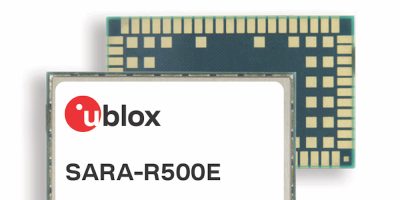The AP72250 synchronous boost converter has been designed by Diodes for step-up conversion in consumer and industrial applications where small form factors are a priority. Target applications include battery-powered devices, USB power supply units, power banks, supercapacitor charging equipment and metering systems.
The AP72250 supports a 900kHz switching frequency with a 20 microA quiescent current (IQ). It covers a wide input voltage range between 0.6 and 5.5V, with a minimum 1.0V input start up. The output range is 1.7 to 5.5V. The device integrates a 20 mOhm high side power MOSFET and a 26 mOhm low side power MOSFET.
Different operating modes can be selected and can be programmed according to users’ needs. Operating mode options are pulse frequency modulation (PFM), ultra-sonic mode (USM) and forced pulse width modulation (FPWM) mode. Engineers can therefore adjust operation under either heavy or light load conditions to maximise efficiency. According to Diodes, even when in light load situations, up to 89 per cent efficiency can be attained. The USM mode ensures that switching in the audible frequency range is prevented.
The AP72250 is claimed to deliver a seamless transition between boost and pass-through operation (in applications where this is required). The peak current mode control scheme allows it to handle a variety of input-to-output ratios. As a result, fewer external components are needed to support it than required by competing devices, said Diodes.
Under-voltage lockout, thermal shutdown, peak current limit, negative current limit, and output short circuit protection functions are also included.
The AP72250 is supplied in a WLCSP-12 package (measuring 1.75 x 1.35 x 0.45mm) and is available now.
Diodes provides semiconductors for companies in the consumer electronics, computing, communications, industrial, and automotive markets. Its portfolio includes discrete, analogue and mixed-signal products and packaging technology to meet customers’ needs. There are 32 sites worldwide, including engineering, testing, manufacturing, and customer service.







